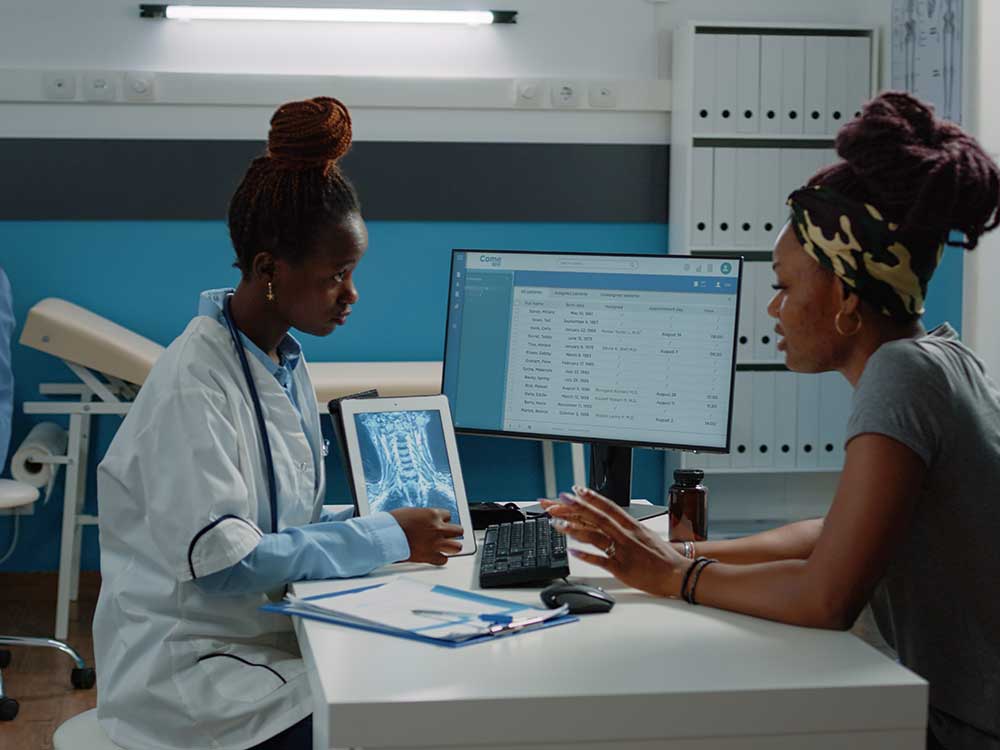Comprehending the Trick Functions and Obligations in Medical Administration
Comprehending the Trick Functions and Obligations in Medical Administration
Blog Article
Ideal Practices in Medical Management for Improving Effectiveness and Lowering Expenses
In the ever-evolving landscape of health care, the quest of ideal practices in medical administration is vital for enhancing effectiveness and curbing costs. By incorporating sophisticated technologies such as digital health and wellness documents and telemedicine, healthcare service providers can streamline operations and improve client care. Nevertheless, innovation alone is not a remedy; optimizing source allocation and cultivating joint interaction among treatment teams are equally vital (medical administration). As organizations aim to stabilize quality and price, what approaches should be prioritized to accomplish these dual goals? The solution to these inquiries hold the key to a much more lasting health care system.
Leveraging Advanced Modern Technology
The assimilation of digital options into medical care systems has actually transformed the way facilities operate, simplifying processes and improving patient treatment. By systematizing client details, EHRs get rid of the need for difficult documentation and assist in seamless communication amongst health care suppliers.
Telemedicine is another technological improvement that has actually transformed individual communication. It offers benefit for both patients and health care professionals by enabling remote appointments, which can lower the requirement for in-person check outs and enhance consultation scheduling. In addition, telehealth systems can expand healthcare access to rural or underserved locations, connecting gaps in care shipment.
Furthermore, the use of Expert system (AI) and machine knowing is becoming progressively common in anticipating analytics, enabling early detection of potential health problems and even more educated decision-making. These technologies, when integrated successfully, can enhance analysis accuracy and individualize patient treatment plans, eventually causing improved medical care end results and operational performance.
Optimizing Source Allotment
Effective source appropriation is important for maximizing the effectiveness of medical administration. By tactically taking care of resources such as employees, devices, and finances, health care facilities can dramatically improve their operational efficiency, boost client end results, and lower unneeded expenses. The initial step in enhancing resource allowance entails conducting a comprehensive evaluation of existing possessions and recognizing areas where sources might be underutilized or overextended. This assessment ought to be data-driven, making use of metrics and analytics to notify decision-making processes.
Focusing on source appropriation based on patient requirements and solution demands is vital. This involves straightening resources with high-demand areas, such as emergency treatment or specialized therapies, to make certain timely and effective patient treatment. Executing versatile staffing versions can also enhance labor resources by changing workers appropriation in reaction to fluctuating individual volumes. Furthermore, welcoming telemedicine and other technological remedies can ease physical resource restrictions by offering alternate opportunities for patient-provider interactions.
Funds must be diligently kept track of and allocated with strategic insight to sustain both short-term operational needs and long-term institutional goals. This consists of investing in training programs that improve personnel competencies and adopting energy-efficient techniques that reduce operational expenses (medical administration). Inevitably, a maximized source allotment method fosters a lasting healthcare environment that is receptive, effective, and economically sensible
Streamlining Process Processes
When medical care facilities aim to boost operational effectiveness, simplifying operations processes becomes a pivotal focus. Reliable process decrease redundancy, remove unnecessary steps, and enhance control among healthcare professionals. This approach not only increases solution distribution however additionally improves the quality of patient treatment.

Following, modern technology combination plays a substantial duty in improving operations. Applying digital wellness documents (EHRs) and electronic medical professional order entrance (CPOE) systems lowers documents, reduces human mistake, and ensures details comes to all pertinent personnel. In addition, leveraging telemedicine platforms can improve individual assessments and follow-ups, lowering the stress on physical framework.

Ultimately, structured workflows cause set you back reductions and boosted client fulfillment, cultivating a more sustainable health care atmosphere.
Enhancing Data Administration
Building upon streamlined workflows, maximizing data administration becomes an important element beforehand medical care administration. Efficient information administration systems are critical for preserving accurate client documents, boosting decision-making, and guaranteeing compliance with regulatory standards. By carrying out durable data monitoring services, healthcare centers can enhance the high quality of patient care while all at once decreasing operational prices.
One secret element of improving information management is the combination of innovative electronic wellness record (EHR) systems. These systems assist in the seamless exchange of client details across various departments, decreasing duplication of examinations and lessening mistakes. A well-designed EHR system supports data analytics, allowing doctor to determine patterns and make notified choices regarding patient treatment.
Additionally, guarding person data is critical. Adopting comprehensive cybersecurity measures, including security and routine audits, ensures the stability and privacy of sensitive information. This not only shields people yet additionally maintains the institution's credibility.
Spending in team training is one more vital aspect. Informing healthcare specialists on data monitoring practices enhances their capacity to efficiently make use of technology, resulting in enhanced individual outcomes. In conclusion, improving information management via sophisticated technology and extensive training is crucial for achieving performance and price decrease in medical administration.
Fostering Collaborative Interaction
A critical part ahead of time clinical administration is promoting collaborative communication among health care experts. Reliable interaction is extremely important for ensuring smooth individual care, optimizing therapy results, and reducing mistakes. By encouraging open discussion and coordination across multidisciplinary teams, healthcare companies can boost their operational efficiency and reduce unneeded expenses.
Central to this method is the combination of communication innovations such as digital health and wellness documents (EHRs) and protected messaging systems, which promote the quick exchange of critical patient information. These tools make it possible for doctor to access and share information in real time, ensuring that all employee are notified and lined up in their decision-making procedures. Routine group meetings and interdisciplinary rounds can further promote a society of cooperation and liability.
Educating programs concentrated on boosting interaction skills are additionally essential. These programs can assist personnel develop the ability to see this here convey details plainly and listen proactively, thus reducing misunderstandings and cultivating a helpful workplace. Additionally, adopting standard communication methods, such as SBAR (Circumstance, Background, Analysis, Recommendation), can improve the exchange of details, making certain that crucial information are shared succinctly and efficiently. Ultimately, promoting collective interaction leads to enhanced health care distribution and expense savings (medical administration).

Conclusion
Integrating advanced technology, such as electronic health records and telemedicine, alongside optimized resource allotment and streamlined operations processes, is vital for boosting efficiency in medical administration. Efficient information monitoring and promoting joint interaction amongst medical care teams are critical for decreasing redundancies and improving care top quality. By prioritizing preventative treatment and participating in high quality renovation initiatives, health care organizations can attain considerable expense financial weblink savings and improved person outcomes, thus making sure sustainable healthcare delivery in a significantly intricate setting.
Report this page